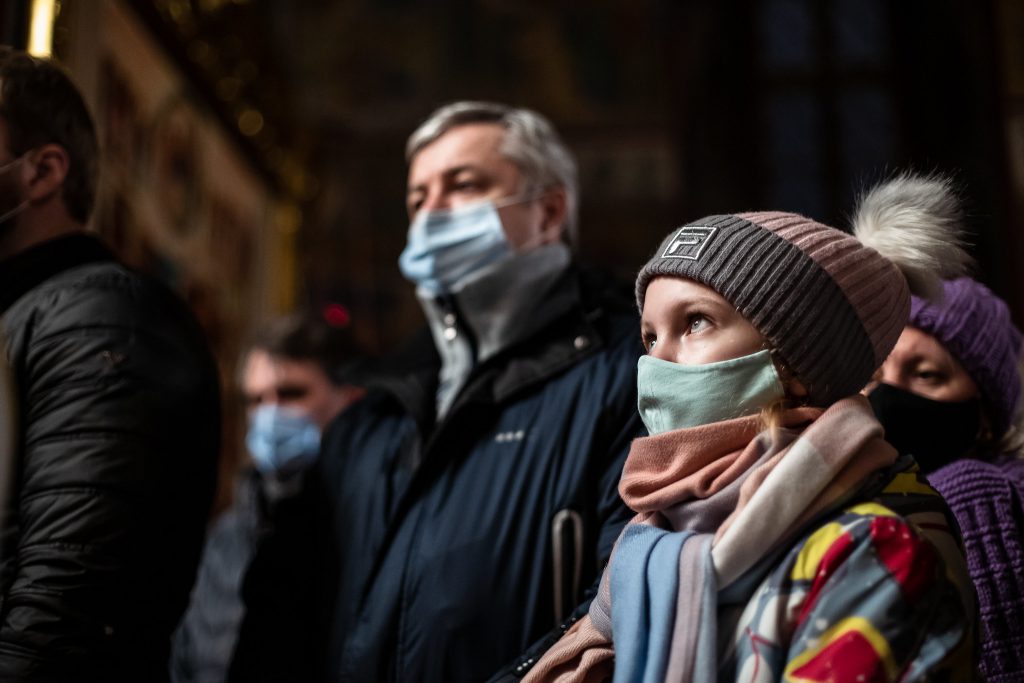Throughout 2020, when I talked with my family in Russia over the phone, I couldn’t understand what was going on there. Like many other countries affected by the novel virus, Russia set a lot of restrictions in response to the pandemic. The news from my hometown looked grim. The numbers of cases were frightening. Yet my niece didn’t give up her summer vacation plans. Some of my friends in Siberia even managed to spend a few weeks outside Russia. The news websites posted photos of overcrowded hospitals across Russia, and reported morgues working beyond their capacities, but it seemed that aside from masks and gloves, not so much has changed in the lives of my ex-compatriots. I lost a dear friend during the pandemic. It wasn’t exactly to COVID, but to their serious underlying health conditions.
When I received a question from a reader of my blog asking how Russia and Russians are coping with the COVID, isolation, shutdowns and such, I realized that I didn’t know how to answer. So, I decided to ask my friends in Russia bluntly and unequivocally: What is going on in your city? What restrictions are being actually enforced? What has changed since the beginning of the pandemic?
I talked to people from different areas, from Siberia to Kaliningrad, and they gave me slightly different pictures regarding the restrictions, because in different areas, regulations may vary. To the point, it is up to local governments to decide what restrictions to apply in order to keep the balance between safety and economic viability. That makes perfect sense to me, as Russia is very big, and living conditions vary greatly.
Masks On

Since the beginning of the pandemic, masks have been mandatory everywhere in Russia. In most of Russia’s cities, local authorities impose fines on violators, some places more enthusiastically than others. “You can’t be in the public space without a mask. Some people dissent, but they are marginalized. And they get fined,” said my friend in Central Russia. Another friend in Russia’s westernmost area said, “Now that the restrictions are lifted, and the daily cases are between 205 to 220, people don’t give a darn. Yeah, you should wear a mask, because police would throw you out of a bus or shop if you didn’t. Fines were applied, but people challenged them in court, and quite successfully. In the stores, people wear masks because nobody wants your local store to get in trouble.”
Shopping, Dining Out and Getting Fit
To my great surprise, most restaurants, cafes, and bars in Russia are open for indoor dining (with take-out and delivery options still available). The diners have to reduce capacity and follow sanitary protocols (by the way, in Russia, restaurants followed strict sanitization protocols before COVID), but people started dining out again. It’s just that the hours are reduced, and nightlife in Moscow and other large cities looks a bit duller than usual. “Restaurants and bars are open, just not at night,” my friend in Siberia said, “however, public events are not cancelled, just the capacity reduced to 50%. Hockey matches, concerts, it’s all back.”
Hanging Out and Social Gatherings
Russian culture is considered to be community-oriented, and the isolation that was enforced at the beginning of the pandemic was met with considerable resistance. Russians (please, allow me this generalization) don’t give up their social life easily.
When the second wave hit Russia, health authorities didn’t limit social gathering. That took its toll, of course. “In mid September, most restrictions were lifted in my city, and soon, the numbers (of new cases) surged. It lasted until the end of November. But since then, the numbers are stable, and the pressure on the hospitals has eased”, my friend who is in the health-care business said. “Everybody got tired of those restrictions. People started hanging out together, going for shashliks and so on. Skate rinks are fully packed, and swimming pools are busy, and shopping malls are full,” my friend in Moscow confirmed.
Of course, many people celebrated the New Year eve, the major Russian holiday, with company, big or small. Psychologically, it is very hard to spend the most important night of the year all alone. Will that lead to a surge in new cases? Time will tell.
Working and Studying from Home
In Russia, just like in many other countries, many companies switched to working from home when possible. “In Moscow and Saint Petersburg, it is a general trend. Office staff works from home almost everywhere,” the Moscow friend said, “Nearly 30% of all employees should be transferred to remote work.” Friends in central Russia, Ural, Siberia, and The Far East confirmed that working from home is their new norm as well.
While kindergartens and daycare facilities are open, Russian schools have been practicing online education since the beginning of the pandemic. Colleges and universities switched to online, too. Are teachers happy about it? Well, not quite. Technologically, Russia is quite ready for online education. High speed internet is omnipresent and affordable in Russia. The problem seems to be that educators can’t adjust to the new environment; at least, not yet. I suppose, in this regard, Russian teachers are no different from their colleagues in the US or, say, France. Also, Russian forums are full of desperate parents asking other parents for help, because their children are struggling with algebra or chemistry.
Hospitals, Herd Immunity and Skepticism
About half of my friends who talked to me for this article got COVID last fall. Some of them were diagnosed afterwards, when they checked their blood for antibodies. Everyone said that the numbers might look frightening, but the majority have had COVID-light, with very mild symptoms, or without any symptoms at all. And though some of my friends (and I myself) lost somebody, those losses were due to generally very poor health or/and very old age.
In November, during the peak of COVID infection, Russian hospitals were overcrowded. Often, cities would make a few hospitals exclusively for COVID patients or transform empty business buildings to COVID hospitals. Now, when the amount of new cases has kept more or less stable, the COVID hospitals are transformed back to what they were before. “In November, it was so bad that elderly patients with saturation 90% wouldn’t be accepted in the hospitals; however, now, the hospitalization rate is manageable. During that surge in November, people had to wait for an ambulance for up to 72 hours. It is much better now,” my friend who works in healthcare said. Another friend in Siberia said, “I’ve read in the news that hospitals are like hell on earth now, but I was in the clinic recently, and it wasn’t busy at all”.
My friends’ anecdotal observations got confirmed by other sources. Among some others, I personally trust the blog of Alexey Yakovlev, a doctor who works for a large international corporation in Russia and participates in many educational projects. According to Dr. Yakovlev, by the end of 2020, Russia has almost reached herd immunity, the new cases are getting milder as the virus attenuates, and the hospitalization rate is getting lower. He also spoke positively about the Russian vaccine, which, he hopes, would end the coronavirus epidemics in Russia. What he really considers dangerous and damaging is the panic that mass media incite and support. If you want to practise Russian and learn more about coronavirus and how Russia handles those challenges, I highly recommend his blog. This is a voice of rational thinking and reason among mass insanity and panic.
Third Wave
My friends who work in labs and clinics said that the third wave in spring is likely, however, it is going to be weaker and less severe since many are already immune, and others are about to get vaccinated soon.
“Well, of course, I am nervous. Of course, those daily updates on numbers are unnerving, but hey, life goes on. Sorry, I’m in a store, and I have to pay for my booze,” a good friend of mine messaged me, summarizing the common mood.

